28 February 2011
By Jason
In Lima, Peru

Cordillera Blanca, Huaraz
From Trujillo, we just barely squeezed in a few days in the Cordillera Blanca region around Huaraz on our way back to Lima. Unfortunately, the weather here was less than perfect, especially after coming from the beautifully temperate ‘Eternal Spring’ of Trujillo and the Northern Coast. The weather was so bad actually, that we cut our trip here short after only a few days and with barely a glimpse of the famed mountain peaks we had come to see. That will have to wait for a revisit…

Monasterio San Francisco
Then, onward to Lima- Our last stop. Back to the beginning so to speak. It seemed like such an amazingly long time since we had stepped off the plane five months ago onto the South American continent for the first time, surrounded by hoards of Taxi drivers yelling in Spanish and barely being able to offer a word in response. Now, five months later, and a few thousand kilometers behind us, we felt so much wiser. So much more experienced. We had been so many places, experienced so much, it didn’t seem possible that it had been only five months. We had done so much more than just traveled through Peru. We had survived it. We learned the language, learned to navigate this crazy country, the busses, the crowded markets… We’d gotten lost, robbed, climbed mountains, and swam in Amazonian rivers. Peru wasn’t a place for a leisurely vacation. It was a place that took some figuring out. But once that happened, it had gotten into our hearts and it was going to be a hard place to leave.
Continue reading
Lima, Peru, South America
24 February 2011
By Lena
In Peru, Trujillo
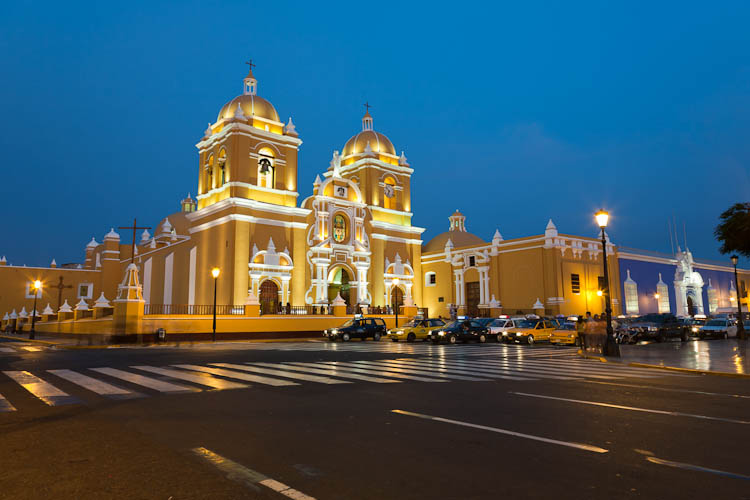
Plaza de Armas , Trujillo
After Iquitos, Trujillo would be our last stop of our Peru trip before Lima. I had been looking forward to this town on the north coast of Peru forever: Warm weather (not so humid, as in the Amazon), beautiful beaches, always sunny, charming colonial buildings, and ancient ruins all in the surrounding area.
Continue reading
Chan Chan, City, Colonial, Huaca de la Luna, North Coast, Peru, South America, Trujillo
18 February 2011
By Jason
In Amazonas, Iquitos, Peru
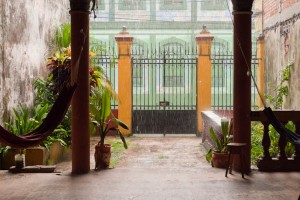
Summer Rain in Iquitos
Hot, steamy Iquitos was one of our last stops in Peru. After five days on a stinky boat surrounded by hundreds of other sweaty bodies, we were glad to set foot on (relatively) solid land again. Iquitos is the largest city in the world which is not reachable by any road. The only way in (or out) is by river on the Amazon or Ucayali, or a plane over miles of thick jungle. It’s an awesome feeling being surrounded by unspoiled jungle in every direction for literally hundreds of kilometers before the next city of any size. Unbroken only by thatched riverside villages, the occasional sugar cane field, or banana plantations, the jungle literally swallows you up. Makes you feel so small and insignificant… Lost out in the middle of such a beautifully wild environment.
Continue reading
Amazon River, Amazonas, Iquitos, Jungle, Peru, Rainforest, Rio Amazona, South America
12 February 2011
By Lena
In Amazonas, Iquitos, Peru, Pucallpa
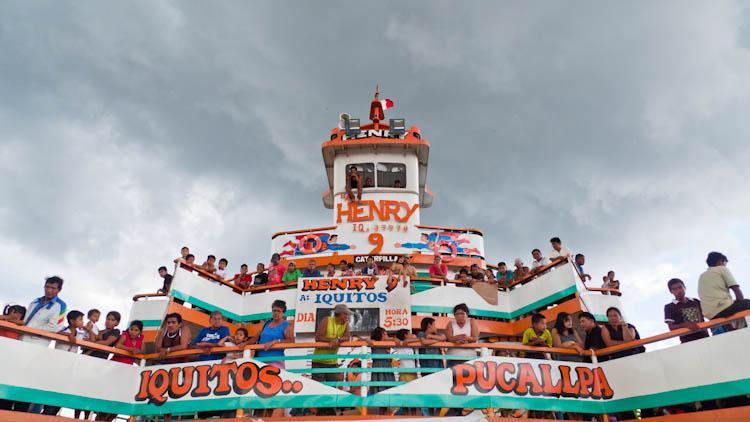
Typical Day on Board
Since Iquiotos is the largest city in the world, which is not connected by any road, anyone, who wants to travel from Pucallpa to Iquitos, has two ways: you can either fly or take the boat. We opted for the four-day cruise. This, one imagines will be quite an adventure, and yes, even a little romantic... at least before. One has in mind a boat, like the idyllic steam ships from the 19. Century, traveling up and down the Mississippi River. One imagines hammocks hung lazily on deck, swinging back and forth in the breeze, while he gazes on the wild forest to the left and right gliding along the river. Unfortunately, the reality is quite different, and looking back actually leaves a shudder for a moment.
Continue reading
Amazonas, Boat, Iquitos, Peru, Pucallpa, Rio Ucayali, River, South America, Travel
07 February 2011
By Jason
In Amazonas, Peru, Pucallpa
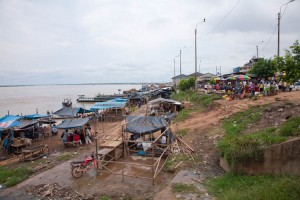
Pucallpa Waterfront
I write this now, as we sit in Pucallpa’s port, waiting for the boat to leave for Iquitos: Perhaps today, perhaps tomorrow, or the next day. Things just work a little differantly here… We arrived in steamy Pucalla straight from the cool central Andes after a long eighteen-hour bus ride though what is supposed to be the most drug-infested area of Peru. About two in the morning, the bus was boarded by a police officer armed with a semi-automatic machine gun who asked for a “protection donation”. We knew we were going to be in for something interestesting in this deep jungle town… Pucallpa proved to hide adventure and interest in many unexpected places, and heat, humidity, and mosquitos aside, and incedibly beautiful place to interact with the people, the culture, and the landscape of the jungle.
Continue reading
Amazonas, Jungle, Peru, Pucallpa, Rio Ucayali, South America
28 January 2011
By Jason
In Central Andes, Peru
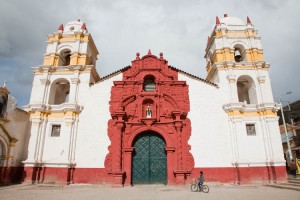
Church in Huancavelica
After a quick stop in the desert-oasis of Huacachina to break the long trip from Arequipa to Ayacucho, we got on yet another all-night bus bound for the Andean Highlands. We visited Ayacucho, the pretty colonial town of Huancavelica, and then a very quick stop in Huancayo… This was a great taste of traditional Peru, and a nice relief from the Gringo-Trail, visiting places very little touristed by outsiders. In Huancavelica for example, we were met by a curious crowd of children when we arrived, and all over town the people seemed extra-curious about what apparently were the only two gringos in town!
Continue reading
Ayacucho, Central Andes, Huancavelica, Huancayo, Peru, South American
18 January 2011
By Jason
In Arequipa, Peru
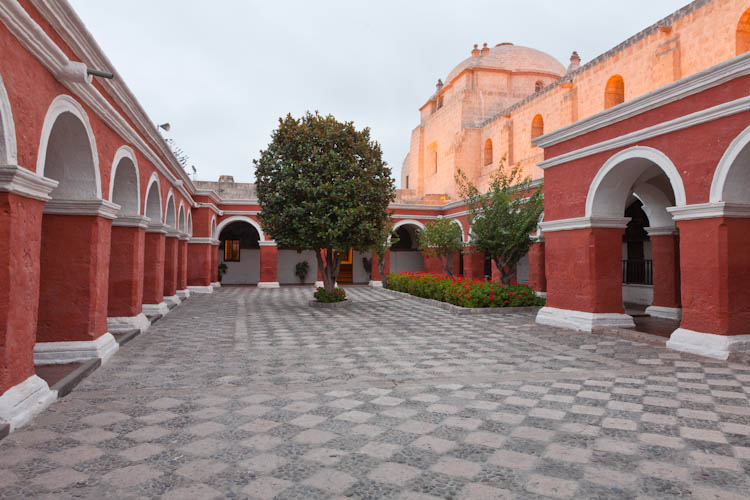
Main Cloister
The Monasterio de Santa Catalina is a cloistered convent in Arequipa, originally built in the 16th century. The founder of the monastery was a rich widow; The tradition of the time indicated that the second son or daughter of a family would enter religious service, and the convent accepted only women from high-class Spanish families. Each nun at Santa Catalina had between one and four servants or slaves, and the nuns invited musicians to perform in the convent, gave parties and generally lived a lavish lifestyle. Each family paid a dowry at their daughter’s entrance to the convent, and the dowry paid to gain the highest status was 2,400 silver coins (equivalent to around $50,000 today).
Continue reading
Architecture, Arequipa, Monestario de Santa Catalina, Peru, Santa Catalina Monestary, South America
17 January 2011
By Jason
In Arequipa, Cañon del Colca, Trekking
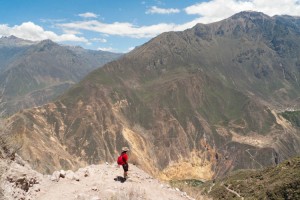
Kevin Overlooking the Canyon
Colca cayon, about 150km north from Arequipa, is a large canyon which at 4,160 m deep is more than twice as deep as the Grand Canyon in the United States. Until a few years ago, this was believed to be the deepest canyon in the world: Now that title goes to the Cañon de Cotahuasi, just 100km to the west, which is deeper by some 150m or so. Still, Cañon del Colca was incredibly impressive in it’s own right; From tiny traditional villages, soaring condors overhead, and huge snow-capped mountains looming in the distance, to the backpacker-mecca of ‘The Oasis’ with its palm-shaded swimming pools in the bottom of the canyon- This was a great mix of rugged nature, culture, and relaxation.
Continue reading
Arequipa, Cañon del Colca, Colca Canyon, Hiking, Peru, South America, Trek, Trekking
10 January 2011
By Lena
In Arequipa, Peru
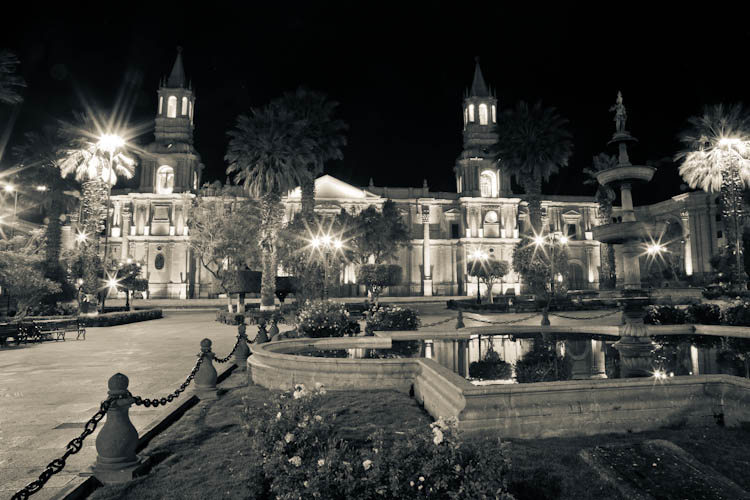
Plaza de Armas at Night
Von dem idyllischen See Titikaka kommend, waren wir auf Arequipa als Perus zweitgrößte Stadt nicht vorbereitet und die Stadt traf und wie ein Schlag ins Gesicht. Die grauen Smog Wolken, die tagsüber so dicht sind, dass man es schwer hat die Umrisse des nahe gelegenen Vulkans El Misti zu erkennen, kündigten sich schon von weiten an: Aus den Bergen mit dem Bus kommend wehte durch die geöffneten Fenster Abgase herein, die einen die Luft nahm und stark an Lima erinnern ließ. Als wir dann am Abend etwas zu essen suchten, wurden wir von der Masse der Menschen überrollt. Wir sollten feststellen, dass man erst einmal wieder lernen muss, wie man sich auf vollen Straßenzügen bewegen muss, um nicht jede paar Sekunden mit einem Passanten zusammenzustoßen.
Continue reading
Arequipa, City, Colonial, Peru, South America
30 December 2010
By Jason
In Peru, Puno
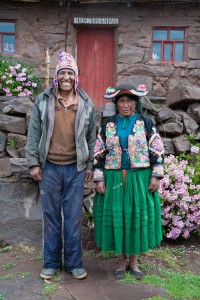
Our Lovely Hosts
After Christmas had passed, we were more than ready to escape from Puno. Our main reason for coming to this region was to visit some of the local traditional communities in the area around the lake. Our first stop was to the Capachica Penninsula, where there are a handfull of tiny communities hugging the rocky mountains wich rise up out of the lake. Besides being nestled in such a gorgeous and untouched landscape, these communities are very infrequently touristed and the only accomodation available on the penninsula is homestay- which of course, is much of the fun!
Continue reading
Capachica Penninsula, Isla Taquille, Lago Titicaca, Llachon, Peru, Puno, South America












 | Powered by
| Powered by